Cacti in video games
Posted by brilokuloj on Feb 8, 2016
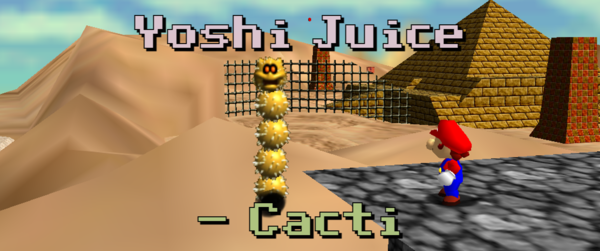
Yoshi Juice is Will’s personal column about lists of things that you would have never thought were important enough to merit being placed in a list.
Today’s article is about cacti in video games!
Super Mario 64
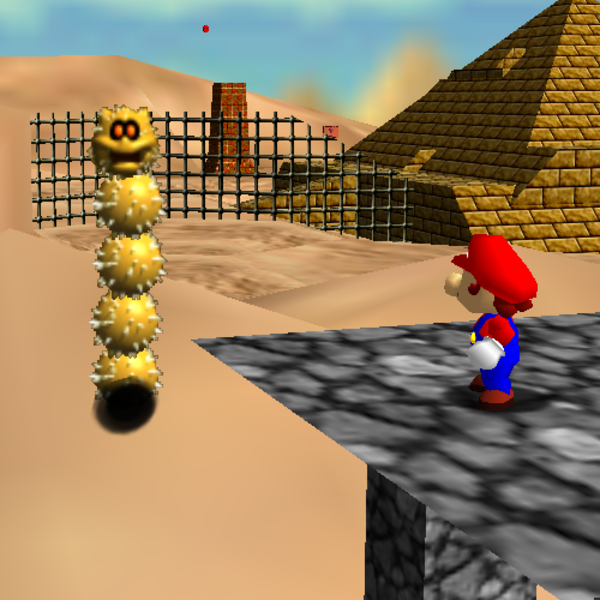
It’s Pokey! This guy is a standard enemy that’s pretty ubiquitous in the Mario series… or, so you would think? Yes, it’s true: Pokey comes from Doki Doki Panic, where they were known as Sanbo (a corruption of the word for cactus). On top of that, they don’t appear nearly as often as you would probably expect, and their design is highly inconsistent between games.
It’s worth noting that in their original incarnation, they were green and didn’t have ‘ears’. Super Mario World was the first to give them their citrus-yellow skin, and that’s the design most people think of, I’d think.
Regardless of their heritage, the Pokey I’ve chosen to highlight is from Super Mario 64. I actually am… kind of scared of them - like, seriously? Why defined cheekbones? Why the horrifying red eyes? In Super Mario 64 DS (the version I’m most familiar with), they’re remodelled into their Super Mario Sunshine incarnation - it’s got an adorable little flower - and I’d have to say I prefer that, although I still wish they would have kept Sunshine self-contained.
As with just about all spheres in Super Mario 64, they’re made up of sprites that turn to face you (these are called ‘billboards’) rather than being 3D modelled spheres. This is why a Pokey will always be watching you, no matter how far away you are. Or at least until you’re beyond their draw distance.
Spyro the Dragon
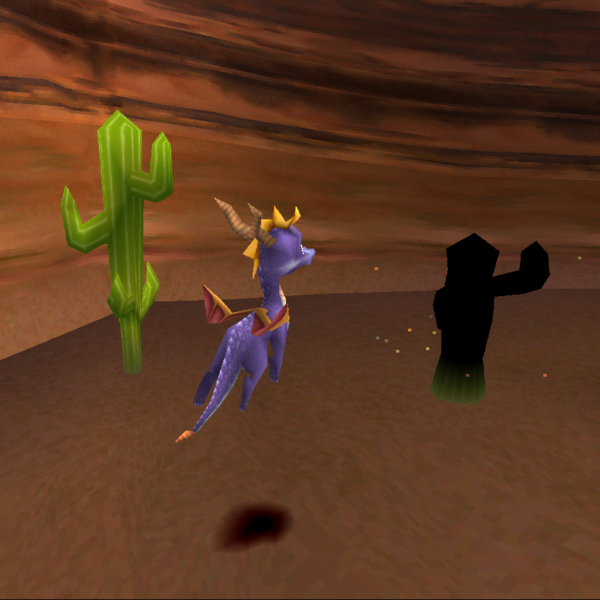
These folks are nice and different shapes and sizes, and there’s quite a few scattered across the levels. You can find them in the Peace Keeper levels, which is actually a fairly lively-feeling desert canyon composed of small towns. There’s a lot of nice desert stuff here that you’re not bound to find in other games, like jackrabbits and lizards, but we’re here for the cacti.
They’re probably my favorite for one reason: you can burn them with Spyro’s fire breath attack. Yes, that’s mean! No, I don’t endorse it! (Unless you’re playing the next two games, in which case, do it because you can get a Skill Point for it.) But it’s a cute little touch of detail that makes the scenery actually interactive, and invites you to explore rather than just appreciate it from a distance. The cacti will actually ‘shake themselves off’, which has some weird implications for their sentience.
Banjo-Kazooie
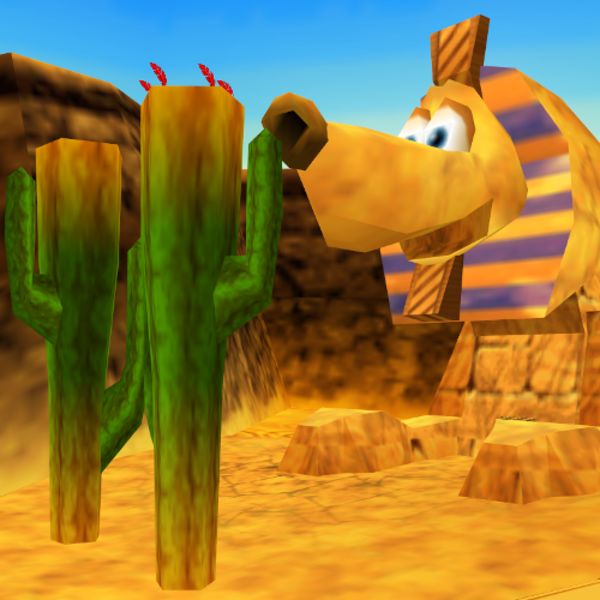
Cacti serve an unusual purpose in Gobi’s Valley, functioning as platforms for you to climb on and hoops for you to fly through. I think this falls under the same interactivity thing I was talking about just a bit ago with Spyro, but… it’s a little more video game-y in this instance.
I think it makes for a great platform (ha) to discuss the discrepancy between Rareware, a second-party company that had been working with Nintendo for quite a while, and Insomniac, a private third-party company with minimal game development experience. Games, ultimately, come down to copies upon copies of each other. Development groups that have been ‘in the game’ see scenery components as mere accessories, and every object as a way to advance. Spyro, on the other hand, relishes entirely in ultimately-pointless scenery details that feel a little more memorable - unlike Banjo-Kazooie, where I forgot about the hoop cacti until Paula had to point them out to me.
What? Of course they’re still cute.
Kirby 64
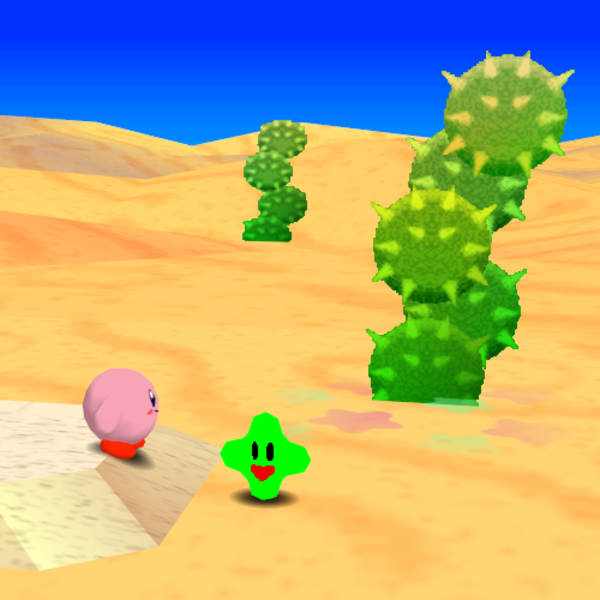
Again with the sprite-based cacti, off in the background. At least they’re fairly endearing.
The fellow in the foreground is named Kacti. The plural is Kactis, which feels… backwards. (Their Japanese name is Sabon. I hope you’ve been following along.) Regardless of whatever lies you’ve been fed by strategy guides, they have two ‘attack’ motions: one is to jump up and down; the other is to wait for Kirby to walk near them, at which point, they’ll roll towards him. Maybe they just want a hug?
Kirby can eat them to get the Needle ability, which seems to spell out all sorts of danger for his digestive tract. Don’t think about it too hard.
Sonic the Hedgehog 2
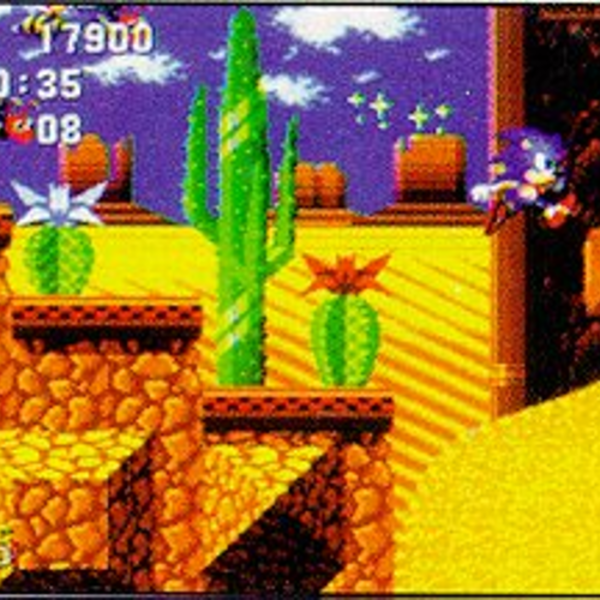
If there’s one thing that you should know about the early Sonic series, it’s that development was hell.
It’s actually kind of sad that these days, gamers don’t really have to worry about this sort of thing. Triple-A games are pretty tightly budgeted entirely to ensure that a nightmare like Sonic X-Treme does not repeat. Cut content does still exist, and sites like The Cutting Room Floor exist to document that, but none of it reaches mythical status; we’re finding more games that discuss the phenomenon than ones that actually feature it.
Somewhere up there is Sonic 2’s Dust Hill Zone, a level that was entirely cut. It only appeared in the form of a single, completely rhetorical mockup (!) that could be found in a Sears magazine (???). It’s probably for this reason that it mystified and terrified people. Unlike the playable Wood Zone (a level that could be found mostly intact in a beta cartridge) and the unplayable Genocide City (an unfortunately-named level that had no data), it was simultaneously mostly-realized and unreachable, making it the ultimate in mystery.
The truth, of course, is that it was scrapped immediately; the mockups existed simply to coddle the press. That didn’t stop people from wondering, though, because it took 6 years for the Sonic series to get a proper cactus-y desert level with Sonic Adventure’s Sand Hill.
… I mean, that is why people cared, right? Because it had cacti in it?
Tagged: banjo-kazooie cacti cactus kirby 64 lists sonic the hedgehog 2 spyro the dragon super mario 64